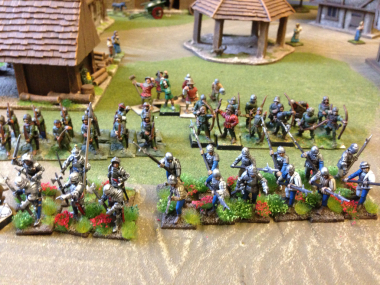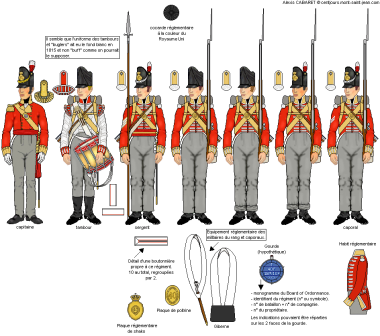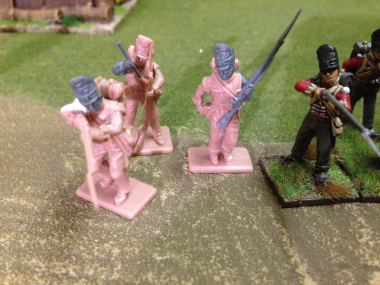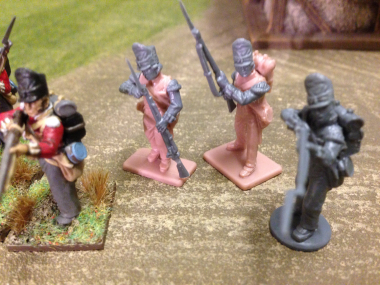Bases, Faces and Flags – these are the key areas for ensuring that your war gaming figures look the best on the table top according to top commission painter Dave Woodward. Well, I’m a great believer in the first and last of these but painting faces on my rank and file troops is not really going to happen. I’m afraid that I rely on a quick wash or shade over a basic flesh coat and that is about as far as it goes for the troops. I will spend a bit more time on the officers and characters and add a bit of a highlight to the nose & cheek bones – I’ll even attempt to paint the eyes, although as often as not my figures look as though they should definitely go to spec savers….
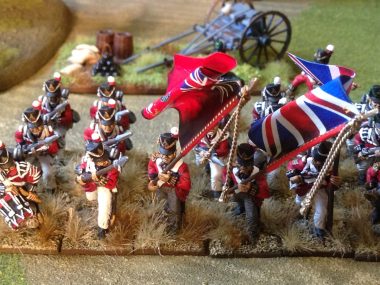
Foward with the Colours!
As for the flags, it goes without saying that if you can add these, your unit will certainly stand out on the table. Part of the attraction of painting Napoleonic troops is the flags and with so many good suppliers out there – the Flag Dude and GMB designs, to name but two – it’s a shame not to ensure that your unit has a flag or two!
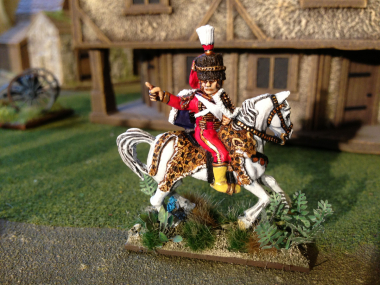
Sir Stapleton Cotton – a bit of a Dandy!
So for me, it’s all about the bases. And so we enter another realm of controversy or taste… If you are in the Dan Faulconbridge (Wargames Illustrated) school of basing you will like a straight forward non fussy finish. This view is based on the notion that the figures should blend into the table top – it makes for better pictures don’t you know! I tend to prefer a nice bit of vegetation on my bases – I cant resist adding a few clumps of flowers! It does mean that my units have to drag the scenery around the table and my opponents usually ask where the park keeper is, but I like to amuse! There is also the matter of what colour to paint the base sides. Leaving them black used to be the fashion, then the there is the green edge following, whereas I prefer a brown edge to my bases.
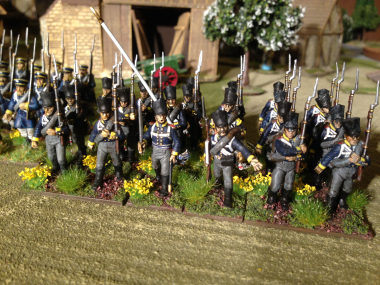
The Prussian advance was halted when the Park keeper shouted ‘get off them flowers!’…
Whatever your taste, I think the guiding rule on bases really is to ensure that you stay consistent with your army and that it really is worth a bit of time spent on finishing your bases off with a bit of detail. One last tip, I have spent ages trying to blend figures onto bases and I have ‘discovered’ the product that I find easiest to use is the Vallejo Grey Pumice paste or the coloured textured pastes from the same Company.

Grey Pumice
I’m working my way through a pot of Desert Sand at the moment. It’s really easy to apply and will ensure that your figures blend nicely onto the bases without an obvious ‘edge’ showing. The textured paste will take a coat of paint with out undercoating and a quick dry brush will enhance the detail. I still prefer to add sand or a scatter and just use the paste to blend the figures on to their bases. Here’s my next batch of figures on the work bench. The pikemen just need the bases finishing and they are ready for the table. The Prussian Cavalry need a bit more work!


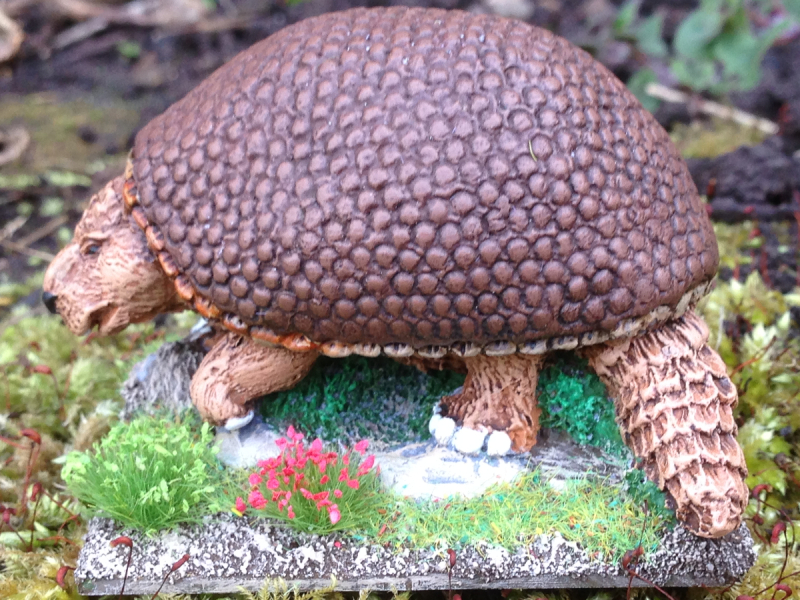
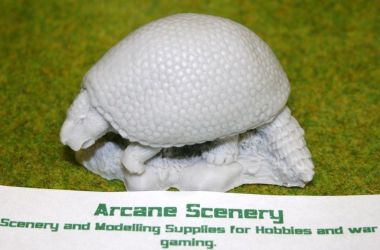 As we go into the Easter break it seemed appropriate to paint something vaguely egg shaped and as the Glyptodon had been sitting forlornly on the work bench in just an undercoat I decided his time had come!
As we go into the Easter break it seemed appropriate to paint something vaguely egg shaped and as the Glyptodon had been sitting forlornly on the work bench in just an undercoat I decided his time had come!

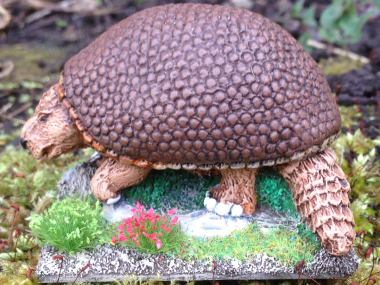
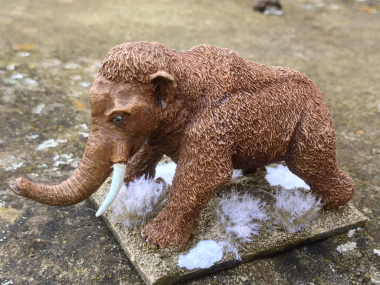
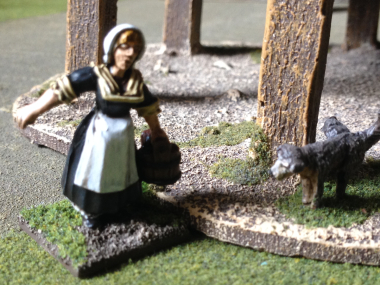


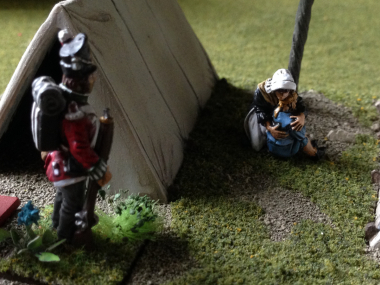
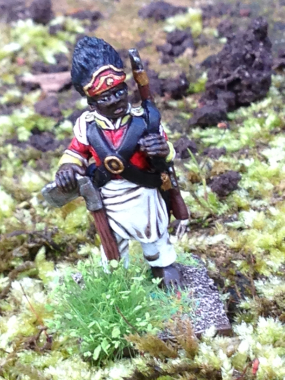

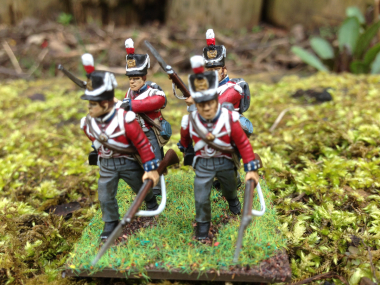
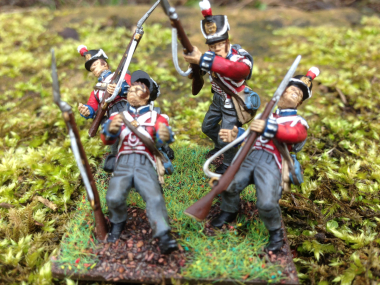
 The next Battalion that I should be painting is the final Hanoverian Landwehr Regiment, The Osterode, but even the excitement of finding that they have green facings and shoulder tufts hasn’t convinced me that another 24 red coats is a good idea at the moment. Then there’s my lack of officers in my army – I’ve got a nice pack of Warlord mounted officers to finish…red coats again though.
The next Battalion that I should be painting is the final Hanoverian Landwehr Regiment, The Osterode, but even the excitement of finding that they have green facings and shoulder tufts hasn’t convinced me that another 24 red coats is a good idea at the moment. Then there’s my lack of officers in my army – I’ve got a nice pack of Warlord mounted officers to finish…red coats again though.
 Then I have my own Deezee range that I am supposed to be painting. I’ve got a bit stuck here as I have undercoated a Glyptodon but I think that I should try to airbrush him rather than paint him, so he’s been relegated to the back of the table along with some Pterodactyls that I have started but cant quite visualize how I am going to base them. Along with the Deezee, I have some superb models from Lucid eye and I really like the look of the new Cromagnons but I was disappointed with my last efforts with Ze-Khor & Harranna so I’m not in the mood for painting these.
Then I have my own Deezee range that I am supposed to be painting. I’ve got a bit stuck here as I have undercoated a Glyptodon but I think that I should try to airbrush him rather than paint him, so he’s been relegated to the back of the table along with some Pterodactyls that I have started but cant quite visualize how I am going to base them. Along with the Deezee, I have some superb models from Lucid eye and I really like the look of the new Cromagnons but I was disappointed with my last efforts with Ze-Khor & Harranna so I’m not in the mood for painting these.

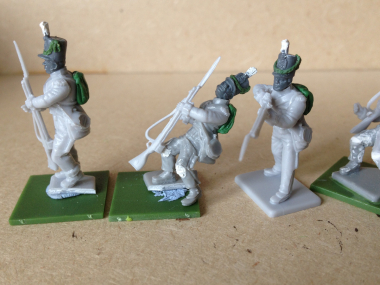
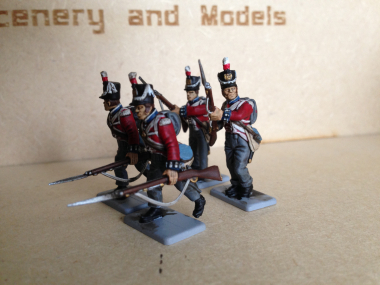

 The title of this weeks blog says it all! Progress has indeed been slow and I am stretching my ‘sculpting’ ability and patience to their limit. The Hanoverians are the problem. I’m trying to match the conversions that I have done to the original Victrix models that I had painted. The first task was to make some blanket rolls to go on their backs in the place of packs. I have actually cheated with a couple of the models and despite saying that I would cut the british packs off of the ones that I had put on in error, I decided to leave a few on. May be those guys had picked a few spare packs up from Quatre Bras! Anyway, modelling the blanket rolls was not too difficult, although a bit time consuming, as I am not used to working with green stuff. You can see the result in the picture above – I think that once they are painted they will be fine.
The title of this weeks blog says it all! Progress has indeed been slow and I am stretching my ‘sculpting’ ability and patience to their limit. The Hanoverians are the problem. I’m trying to match the conversions that I have done to the original Victrix models that I had painted. The first task was to make some blanket rolls to go on their backs in the place of packs. I have actually cheated with a couple of the models and despite saying that I would cut the british packs off of the ones that I had put on in error, I decided to leave a few on. May be those guys had picked a few spare packs up from Quatre Bras! Anyway, modelling the blanket rolls was not too difficult, although a bit time consuming, as I am not used to working with green stuff. You can see the result in the picture above – I think that once they are painted they will be fine.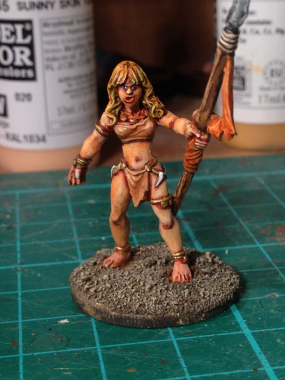
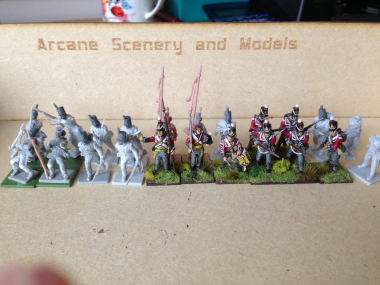 Having finished the Lion Rampant Campaign, it’s back to painting my Napoleonic Army. I’m still working on the British 6th Division at Waterloo and having completed the English Regiments, I’m back on the Hanoverian contingent. There were four Hanoverian Landwehr units in the Division, Verden, Lunberg, Munden & Osterode and so far I have painted two of them. So on with the third unit now. First of all a disclaimer! I have decided to model two of the units wearing Stove pipe shakos and two wearing the flat field hats for no other reason than they will look nice on the wargames table. Actually finding accurate descriptions of exactly what the Hanoverian Landwehr really wore is difficult to say the least, with the usual conflicting advice from various sources and experts.
Having finished the Lion Rampant Campaign, it’s back to painting my Napoleonic Army. I’m still working on the British 6th Division at Waterloo and having completed the English Regiments, I’m back on the Hanoverian contingent. There were four Hanoverian Landwehr units in the Division, Verden, Lunberg, Munden & Osterode and so far I have painted two of them. So on with the third unit now. First of all a disclaimer! I have decided to model two of the units wearing Stove pipe shakos and two wearing the flat field hats for no other reason than they will look nice on the wargames table. Actually finding accurate descriptions of exactly what the Hanoverian Landwehr really wore is difficult to say the least, with the usual conflicting advice from various sources and experts.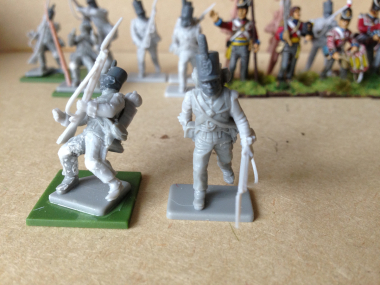
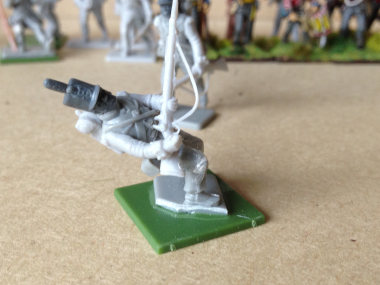
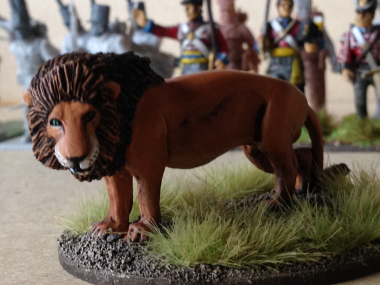
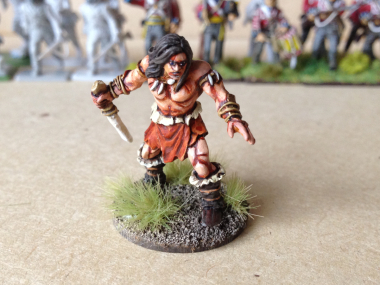
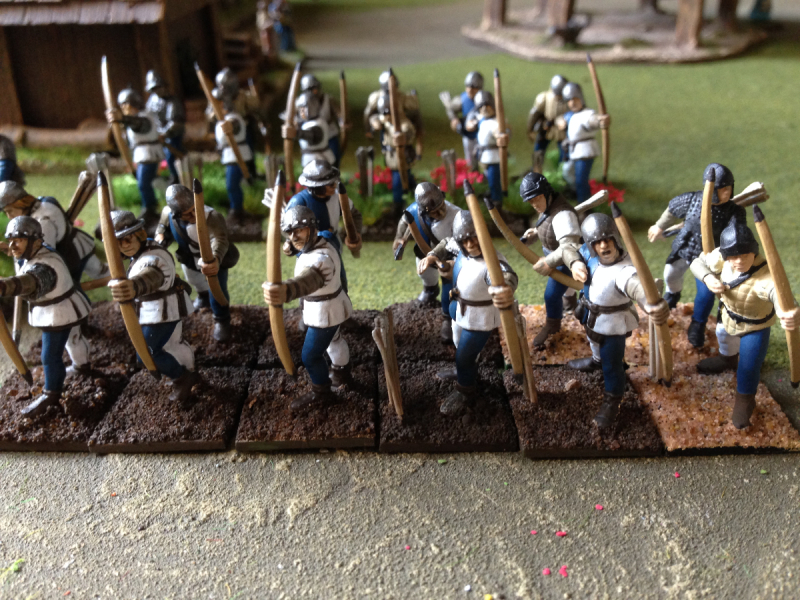
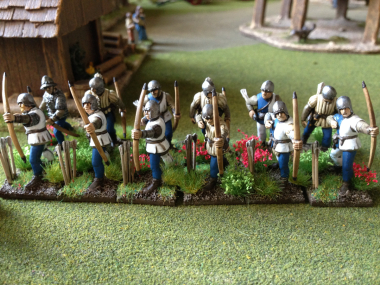
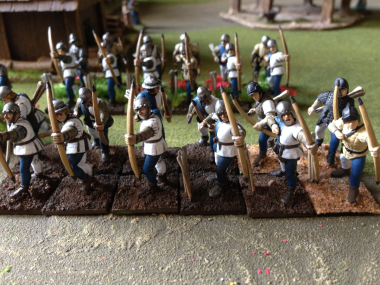
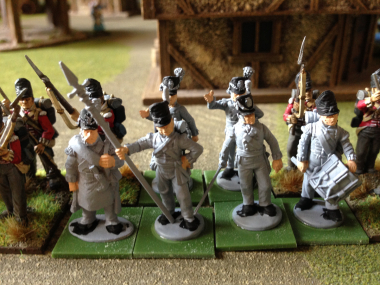






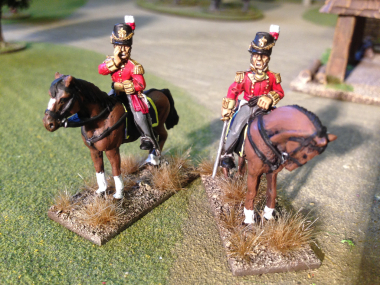
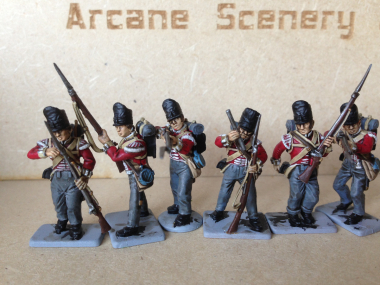

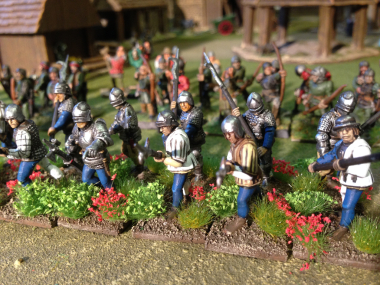 Well that was the question I asked myself when putting together my Lion Rampant retinue. With just 6 men in the unit, an armour value of 1 ( 2 when shot at) and a points value of 2, I couldn’t see why I would bother having these in my retinue. The fact was that I had never heard of a Bidower before, come to that, neither has Wickipedia. A google search revealed the following link, which was sort of useful:
Well that was the question I asked myself when putting together my Lion Rampant retinue. With just 6 men in the unit, an armour value of 1 ( 2 when shot at) and a points value of 2, I couldn’t see why I would bother having these in my retinue. The fact was that I had never heard of a Bidower before, come to that, neither has Wickipedia. A google search revealed the following link, which was sort of useful: